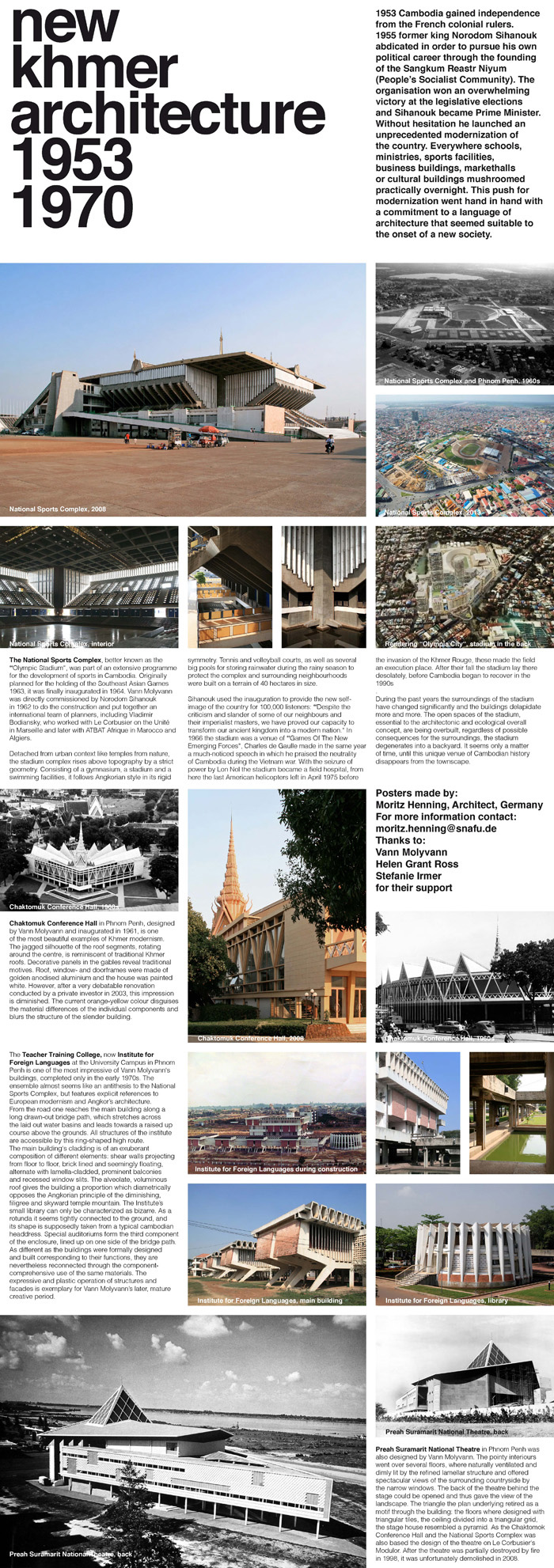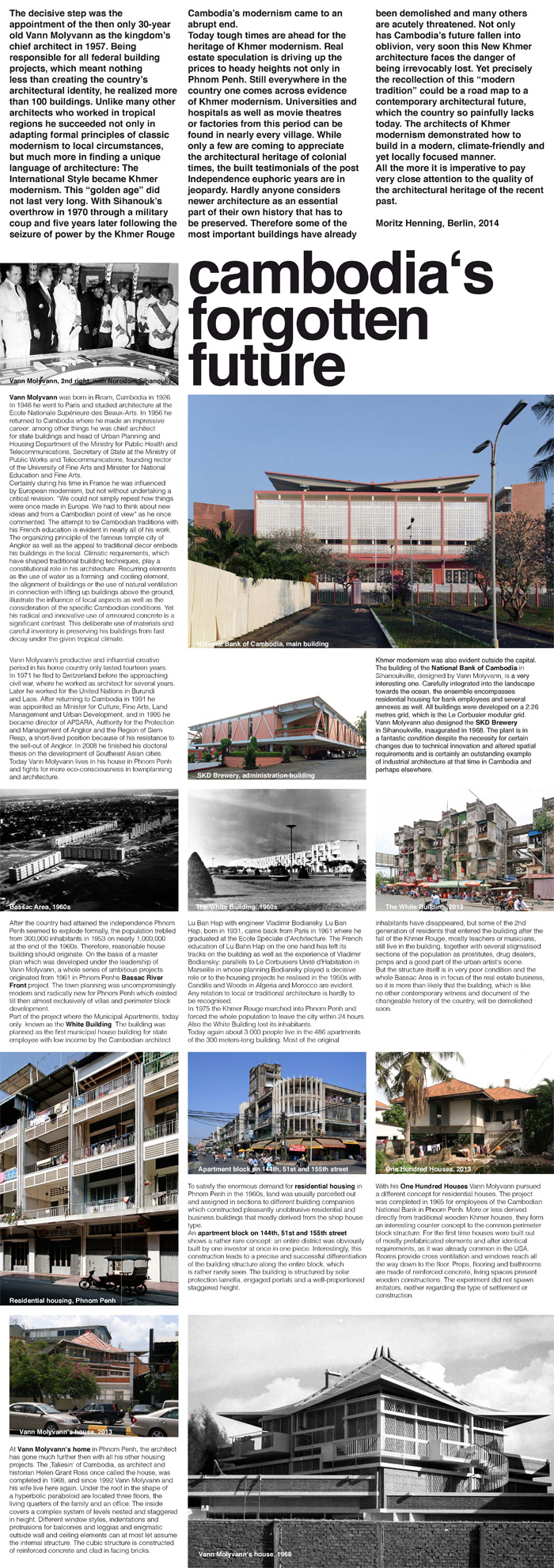Moritz Henning, member of stadtkultur international ev, contributed to UIA World Congress 2014 with two posters on the Cambodian architecture of the 1960s.
The poster exhibition was a contribution to “Otherwhere” the XXV. UIA World Congress of Architecture, 2014, a cooperation between UIA Work Programmes Cultural Heritage & Architecture for a Sustainable Future and eThekwini Municipality City Architecture Department. The project was part of the UIA “Durban Street Project Rivertown” curated by Nina Nedelykov, also member of ski stadtkultur international ev, and Christiano Lepratti.
The Focus was on «cultural heritage and architecture for a sustainable future» and reflected the Congress themes:
- RESILIENCE, in terms of poverty alleviation, space, geo-political economies.
- ECOLOGY encompassing the notions of time, evolution, systems, and environment.
- VALUES, notably those related to professional practice and architectural education.

Poster 1

Poster 2
About “Cambodias forgotten future – New Khmer architecture 1953-1970”:
1953 Cambodia gained independence from the French colonial rulers. 1955 former king Norodom Sihanouk abdicated in order to pursue his own political career through the founding of the Sangkum Reastr Niyum (People’s Socialist Community). The organisation won an overwhelming victory at the legislative elections and Sihanouk became Prime Minister. Without hesitation he launched an unprecedented modernization of the country. Everywhere schools, ministries, sports facilities, business buildings, markethalls or cultural buildings mushroomed practically overnight. This push for modernization went hand in hand with a commitment to a language of architecture that seemed suitable to the onset of a new society.
The decisive step was the appointment of the then only 30-year old Vann Molyvann as the kingdom’s chief architect in 1957. Being responsible for all federal building projects, which meant nothing less than creating the country’s architectural identity, he realized more than 100 buildings. Unlike many other architects who worked in tropical regions he succeeded not only in adapting formal principles of classic modernism to local circumstances, but much more in finding a unique language of architecture: The International Style became Khmer modernism. This “golden age” did not last very long. With Sihanouk’s overthrow in 1970 through a military coup and five years later following the seizure of power by the Khmer Rouge Cambodia’s modernism came to an abrupt end.
Today tough times are ahead for the heritage of Khmer modernism. Real estate speculation is driving up the prices to heady heights not only in Phnom Penh. Still everywhere in the country one comes across evidence of Khmer modernism. Universities and hospitals as well as movie theatres or factories from this period can be found in nearly every village. While only a few are coming to appreciate the architectural heritage of colonial times, the built testimonials of the post Independence euphoric years are in jeopardy. Hardly anyone considers newer architecture as an essential part of their own history that has to be preserved. Therefore some of the most important buildings have already been demolished and many others are acutely threatened. Not only has Cambodia’s future fallen into oblivion, very soon this New Khmer architecture faces the danger of being irrevocably lost. Yet precisely the recollection of this “modern tradition” could be a road map to a contemporary architectural future, which the country so painfully lacks today. The architects of Khmer modernism demonstrated how to build in a modern, climate-friendly and yet locally focused manner.
About the exibition:
The poster exhibition was mounted on the facades of the historic Beer Hall along the public street. It was informal in character and showed architectural and urban projects and initiatives, attracting the attention of a broader public. The exhibition displayed different examples of high density, sustainable and/or culture led, socially responsible urban development strategies in the context of new and existing or listed buildings. The projects ranged from large to small scale and come from different parts of the world. The focus was on projects that function as catalysts for the revitalisation of quarters, areas, ensembles; on projects that involve different and interdisciplinary competences of public authorities, architects, urban planners, sociologists, economists and civil society; and projects in the field of education.
For more information click here